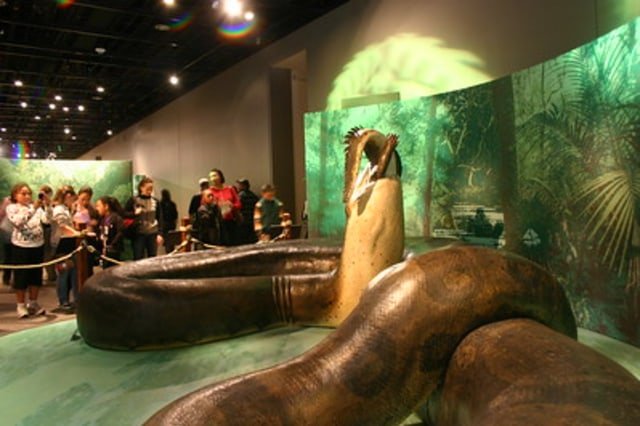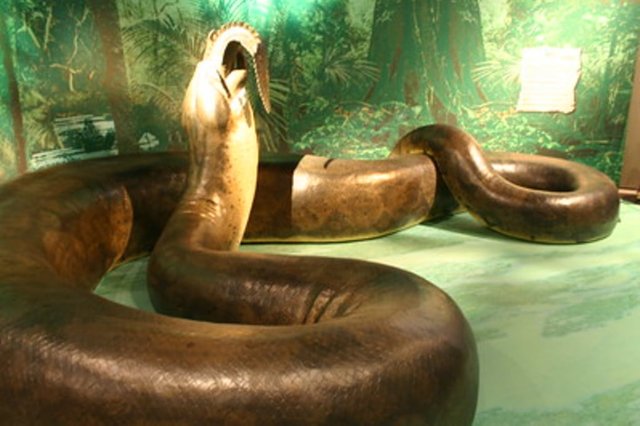 Python or anaconda is not the largest snake that has ever existed in the world. Long before this modern civilization, there lived a giant snake named Titanoboa or Boa Titan, around 58 to 60 million years ago.
Python or anaconda is not the largest snake that has ever existed in the world. Long before this modern civilization, there lived a giant snake named Titanoboa or Boa Titan, around 58 to 60 million years ago.
Its life period is about 5 million years after the extinction of dinosaurs from the face of the Earth. The empty position of the main predator allows Titanoboa to grow to extraordinary size.
Animal with the Latin name Titanoboa cerrejonensis has a length of 15 meters or the same length as a city bus. Body diameter can reach one meter or as tall as a toddler.
The most amazing thing is the weight of Titanoboa which can reach 1,500 kilograms. The weight is the same as the weight of the car in general. This body size can kill any prey.
However, this giant snake is not fanged or venomous. He ambushes his prey with lightning speed. Then destroy, crush, and kill prey using a very large body. It is believed that adult crocodiles also fall prey to these snakes.

The insight that scientists have gained about this film was later raised in a documentary titled "Titanoboa: Monster Snake" which aired on April 1, 2012 on the Smithsonian Channel. The word monster here is of course taken from its large size and what it consumes. Research on snakes and their environment continues to this day. In 2010, a 2.1 meter long crocodile fossil was found near the Titanoboa fossil in Colombia. This tropical country was known as the territory of Titanoboa in its time. This discovery convinced experts that Titanoboa made crocodiles as its food.
"Young crocodiles must be aware of these large snakes because they are easy to eat," explained researchers from the University of Florida, Alex Hastings, quoted by National Geographic. "Even the smallest Titanoboa will have no problems when fighting the biggest crocodile ever found," continued Alex.
Scientists argue that the absence of other predators and the high temperature and humidity of the Earth at that time were the reasons Titanoboa could grow to a very large size.
In the Titanoboa period controlled the earth, the temperature on the surface of the Earth could reach 90 degrees Celsius. This snake also lives in tropical regions in South America that have high humidity.

Until now, scientists have not been able to ascertain the reason for the extinction of Titanoboa. Some experts estimate that the decrease in Earth's temperature is the main reason.
Snakes are cold-blooded animals or unable to regulate their own body temperature. When the ambient temperature drops dramatically, the metabolism of the snake is disrupted until it dies.
Finally, only small snakes are still able to adapt to the new earth's temperature. It is these snakes that we can now meet in forests throughout the world.
So, how scary do you think Titanoboa is? If Titanoboa were still alive today, what would have happened?